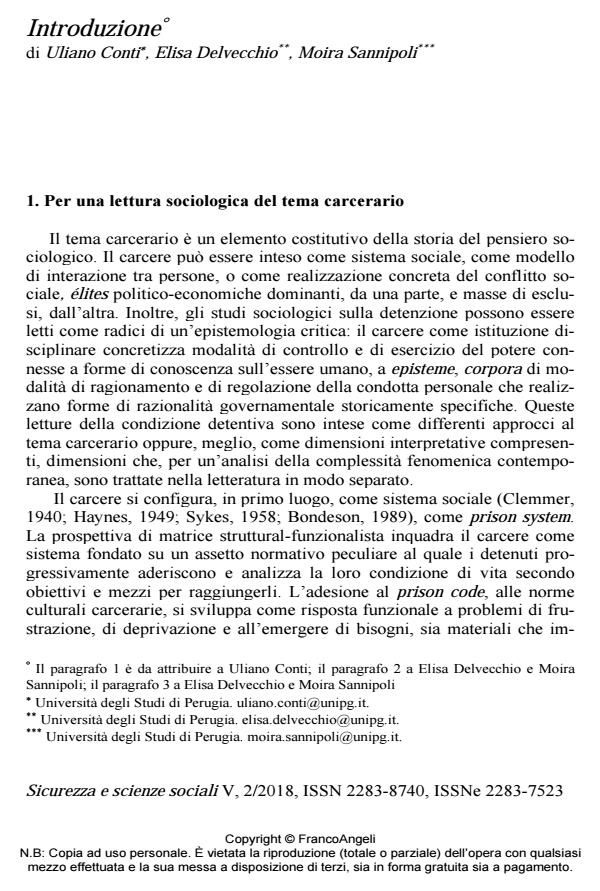Introduzione
Journal title SICUREZZA E SCIENZE SOCIALI
Author/s Uliano Conti, Elisa Delvecchio, Moira Sannipoli
Publishing Year 2019 Issue 2018/2
Language Italian Pages 11 P. 13-23 File size 159 KB
DOI 10.3280/SISS2018-002002
DOI is like a bar code for intellectual property: to have more infomation
click here

FrancoAngeli is member of Publishers International Linking Association, Inc (PILA), a not-for-profit association which run the CrossRef service enabling links to and from online scholarly content.
Uliano Conti, Elisa Delvecchio, Moira Sannipoli, Introduzione in "SICUREZZA E SCIENZE SOCIALI" 2/2018, pp 13-23, DOI: 10.3280/SISS2018-002002